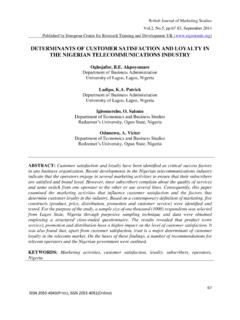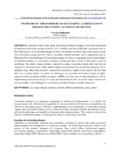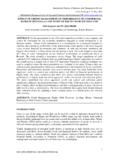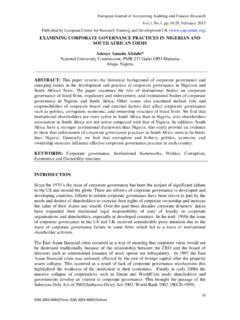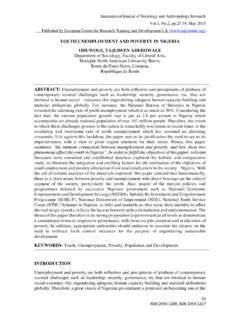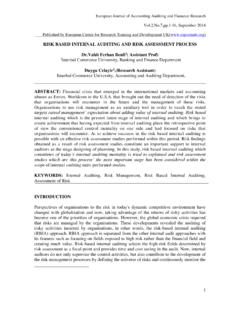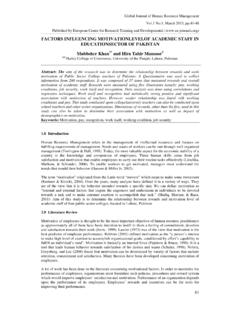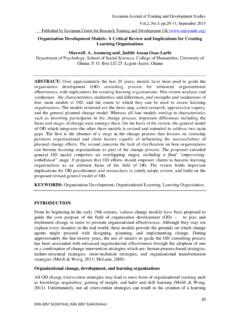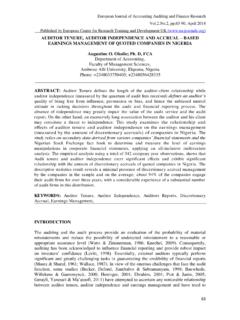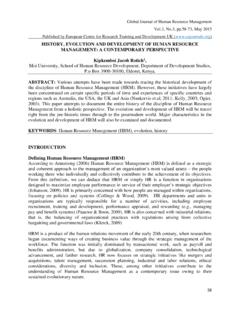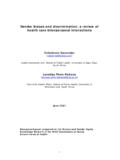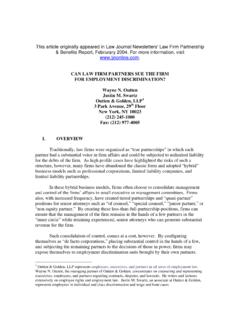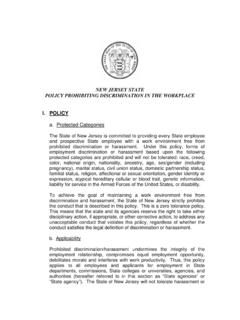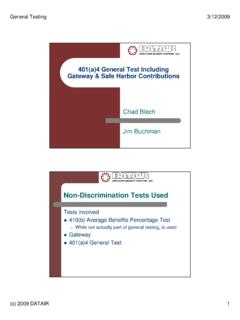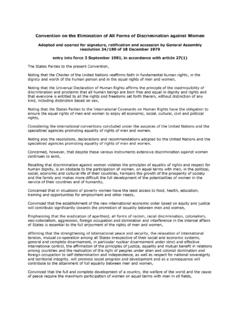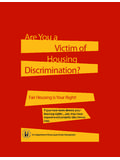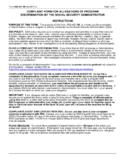Transcription of African Americans and the Workplace Discrimination
1 European Journal of English Language and Literature Studies , ,pp. 56-76, June 2014 Published by European Centre for Research Training and Development UK ( ) 56 African Americans AND Workplace Discrimination Dr Lilly Fernandes Associate Professor, Department of English Al Jouf University, Sakaka, KSA. Dr Nora Hadi Q Alsaeed Assistant Professor &Vice Dean, College of Administrative & Humanities Al Jouf University, Sakaka ,KSA . ABSTRACT: The historical and sociological literature portrays the agony of African Americans who have been and are still victimized by Discrimination in the Workplace .
2 They particularly face a series of unique problems from the policies and the practices of the organizations or from the actions of the individuals. African american women and several minorities were not allowed to participate in most of the desirable jobs and institutions for decades. Even though this is declared unconstitutional, the Discrimination against women and minority groups often persisted. But some work organizations are making progress in their efforts to fight against Discrimination . Problems are imposed on the African Americans through the complex interactions of racially motivated negative attitudes.
3 They face employment process biases, push into minority positions, lack of access to network and mentors, difficulties in advancement and promotion, and psychological and emotional maltreatment. For African american males especially, employment Discrimination patterns are found. For them, employment had become tough in many sectors from 1970 s to 1990 s, as per Burstein (1985). Studies have found that college- educated African Americans have more difficulty than their Caucasian counterparts in securing employment. Discrimination and stereotypes in education discouraged many from obtaining credentials and skills to get good jobs; the higher the position, the higher the level of Discrimination against the African Americans .
4 The employers believed that young African american men were lazy, did not want to work, were immoral, and were not as smart as Caucasian youth. Even if they were employed by chance, they did not receive enough organizational support, had less intrinsic authority, and did not have proper channels of communication and less opportunities of promotion. Women have to encounter both sexual and racial harassment in the Workplace , which involved verbal abuse, epithets, threats, slurs, derogatory comments and unwelcome remarks. This compels them to leave a Workplace culture they perceived to be negative and oppressive.
5 They respond to Workplace Discrimination and racial harassment with anger, rage, hostility, resentment, bitterness and aggression. They often have to face the displacement of feelings of frustration of their husbands. North America s history of Discrimination against African Americans suggests that justice demands effective policies to protect them from human right abuses. Continuation of Discrimination and inequalities in work organizations perpetuate a system of injustice and social stratification characterized by imbalance of power and resources. This is a reality of economic, political and social constraint.
6 There is a need for understanding African american experiences in the Workplace . The research is essentially an overview of major African american Workplace problems that needs to be addressed for an inclusive and diverse Workplace . The research will address (a) organizational, individual and structural sources of African american Discrimination in the Workplace ; (b) Workplace Discrimination , the Affirmative Action controversy, racism and human rights violations of European Journal of English Language and Literature Studies , ,pp. 56-76, June 2014 Published by European Centre for Research Training and Development UK ( ) 57 African Americans ; and (c) organizational and governmental strategies in response to Workplace discriminatory practices.
7 KEYWORDS: African Americans , Workplace , Discrimination INTRODUCTION In the past several decades, researchers have identified the sources of continuous inequality in the Workplace among Whites and African Americans (Farley, 1996). In this respect, studies show considerable light on the roots of African Americans disadvantage along stratification-based issues such as the rates and magnitude of Intra-generational and intergenerational mobility (Wilson, Sakura-Lemessy, & West, 1999); access to crucial reward-relevant properties of jobs such as supervisory authority, job autonomy, and substantively complex work (Wilson, 1997; Tomaskovic-Devey, 1993a, 1993b; Hyllegard, 1996).
8 And returns in the form of earnings and socioeconomic status for investments in human capital credentials (Thomas, Herring & Horton, 1994; Thomas, 1995; Farley & Allen, 1987; Farley, 1996;). Workplace Discrimination is persistent even though it is prohibited (Beauchamp & Bowie, 1993). Discrimination at Workplace can be in the form of race, sex and retaliation. It can be subtle and attributed to unconscious biases. Discrimination on the basis of race involves harassment, denial of access to employment opportunities, underestimation and other unfair treatments (Hill, 1971).
9 There are no biological or genetic differences among races; it leads to inequalities. It is a cordially constructed term which affects normal actions of everyday life. Racism has been unique in United States due to the methods taken to abolish slavery. African Americans also referred to as Black Americans are citizens of United States having partial ancestry from parts of sub-Saharan Africa (Lewis Mumford Center, 2007). The new age racism in America is a byproduct of slavery (Halford H. Fairchild, 2000, p. B7). There exist a wide gap between the lifestyle of White Americans and Black Americans due to difference in opportunities in education (Figure 1.)
10 And employment (Table 1.). African Americans face a number of serious problems at Workplace due to complex interactions which are primarily initiated due to negative attitude against races and organizational policies (Chima, 1999). Laws have changed regarding the treatment of racist interactions but the basic trait of human interactions has not changed in many parts of America and it is prominently reflected in american lifestyle since its origin in 17th century. Unconscious biases against African american still play a significant role in decision making in federal sector ( Americans for american Values, 2010).
